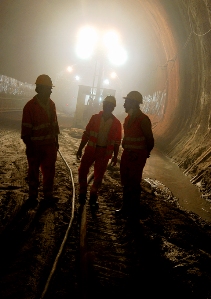Edward: A Photographer Who Takes Pictures of Italian Architecture
Italy is a country full of creative workers. "It is, but it has a taste for self-celebration and an especially conservative visual culture." Edward Rozzo's opinion is perceptive, but it comes from someone who has lived most of his life in Milan, though he was born in New York and graduated in Fine Arts with a major in Photography from the Rhode Island School of Design. Edward therefore knows Italy, along with its visual and aesthetic culture well. He worked first as a fashion photographer and then as an industry photographer for many years. His work, the product of inspiration over many fields, has been exhibited in Milan, Turin, Florence, Verona and France. He has also taught photography at the Academy of Fine Arts in Bergamo, the European Institute of Design in Milan, and, in the early '80s, was the creator of Brera Fotografia at the Pinacoteca di Brera. Today his activities include teaching criticism of visual cultures for the Bachelor of Economics and Management in Arts, Culture and Communication at Bocconi.
 A photo taken by Edward Rozzo of work being done at the tunnel for the high velocity train line between Florence and Bologna |
His experience with photography started in the US, where his professor at college was Harry Callahan, considered one of the great innovators in American photography. After graduation in 1970 he moved to Italy. In the years when Italian fashion was being exported around the world, his approach to Milan occurred through work as assistant to a photographer in the sector. "But I got tired of fashion pretty quickly," says Edward, "so I started doing corporate and industrial photography." In this sector, where he worked for leading brands such as Pirelli, he brought his eye for detail and the attention to lighting that he used in fashion photography. "It was about communicating the structure, the ethics and the vision of the company through images," he says, "in an era when internet did not exist making the visibility of businesses different from today." There is less demand for work with corporate photography these days because of the web, while there is more demand for video: "Which requires very high quality, verging on cinematic quality, with the objective of explaining not just the product, but also who makes it and why."
Along with industrial photography, he has several personal projects. Rozzo has had exhibits at the Biennale of Photography in Turin, the Corrente Foundation in Milan and the Alinari Museum of Photography in Florence. In 1998 his work "Urgent Stories" was displayed at the exhibition "Un nouveau paysage humain" at the Rencontres Internationales de la Photographie in Arles, France, while his exhibit "Pensieri urbani" was hosted at Castello Sforzesco in Milan in 1999-2000. And he's also very involved in teaching. Between 1982 and 1984 he was asked by the Director of the Pinacoteca di Brera to create the Brera Fotografia project, then he taught at the Academy of Fine Arts in Bergamo, at the IED in Milan and the Brussels Watson IBM Center for Management, where he held several seminars on visual communication. Later he worked in Switzerland at the Ecole Superieur d'Arts Appliques in Vevey. He has taught criticism of visual culture at Università Bocconi since 2004.
 The new offices for Il Sole 24 Ore photographed for the company brochure |
In his course on Via Sarfatti, Edward encourages students to look openly at the world surrounding them. In the collective imagination, this open-mindedness should also focus on one of the strengths of the country, the presumed mastery of what is beautiful and tasteful. "We live in a completely visual world, but no one invests more than a little bit of time learning visual language," says the photographer. "We are self-referential and when we see something from outside our culture, we think it is ugly and worthless. I would like to give students the tools needed to understand our world." Understanding who we are in part through the images that we create about ourselves, something that is not always easy to do, because Italy "is a country that is essentially ignorant about visual culture. We are a leading country in fashion and design, yet we don't experiment. In that sense, we aren't open to innovation, we'd rather follow the rules." And anyone who doesn't follow the rules "is shut out." He adds, "Italy has thousands of excellent reasons to be proud of itself, but sometimes this self-celebration clouds our judgment."
Then there's the society of online social networks, with millions of very low-quality photographs and videos that overload the web, which certainly doesn't help increase the level of culture of beauty. But Edward is a possibilist about this. Or rather he stresses how this change is neither correct nor incorrect, but unavoidable. "Just like languages which constantly change, Italian, for example, is simply the vernacular of Latin, the culture of photography with the random shots that began with social networks is just a transformation of the 'high' language of photography. In the end, a battle between those who want to hold onto tradition and those who take part in the transformation is not new." That's one of the reasons Edward does not teach the history of photography in his Bocconi course, "but instead the history of the evolution of taste." The difference may be subtle, but within that difference is the visual culture professor's whole message.